I visited central and northern Chile from December 2 -14, 2015 for intensive birding. Barbara did not go on that trip. Those trip reports are filed earlier on this blog. They are in 2 segments, one published March 23, 2016, and the second published one day later. For those interested in checking those blogs, as a kind of background for this one, there is a prophetic conclusion:
“Sorry, I have no pictures to include in this Blog. Maybe I will have
some photos on my next trip, when Barbara accompanies me and
exercises her photographic magic.”
I originally planned this trip for me only. My primary objective was to go to
Patagonia to see Magellanic Plovers.
I went on-line and found out that Far South Expeditions sponsors privately guided birding day trips out of Punta Arenas (a cruise ship port for Antarctic expeditions) and that Rodrigo would be available for the dates I wanted. I signed up, thinking that
maybe Barbara would like to join me. She wasn’t interested, so I sweetened the offer by proposing we spend a few days exploring Santiago and Valparaiso before or after birding around Punta Arenas. She decided that would be interesting, so the trip was expanded to include a few days in each of those cities.
In casual conversation a few days later, I mentioned that quite a few years ago a good friend of mine had highly recommended a visit to Easter Island for its cultural and historical interest. Barbara, to my surprise, said she had dreamed of going to Easter Island ever since she was a child, but did not think she would because it is so remote. If ever there would be a good time to do it, though, it would be by adding it onto our trip to Santiago, the only place with regular plane service to the island. And so we did, and the trip to Chile was expanded from its originally planned 2 or 3 days for me only to 2 weeks for both of us.
Barbara will report on Santiago and Valparaiso.
Santiago is Chile’s capital and largest city with a population of 5.15 million. It sits in a valley surrounded by the snow-capped Andes and the Chilean Coast Range.
Due to early morning flights out on a couple mornings, we found staying at the Holiday Inn across the street from the airport very convenient. It was also a handy place to take advantage of an excellent transportation system. We caught the bus which went to a metro station. From there we could take the subway anywhere in the city. The public transportation system works very well.
Instead of taking organized tours, we prefer to set out on our own to see the sights of our choosing. Our first visit was to Cerro San Cristóbal, the second highest point in the middle of the city.
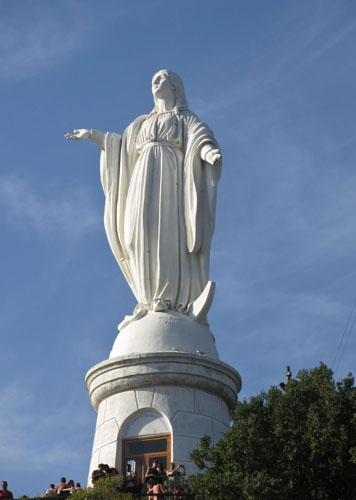
It provides a wonderful panorama a of the city.
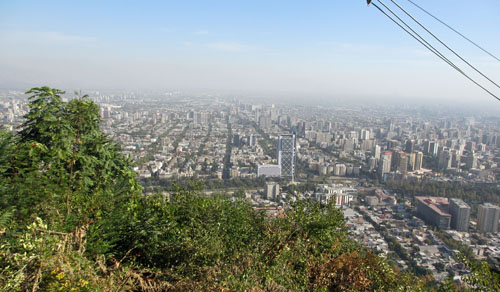
We rode the funicular up,
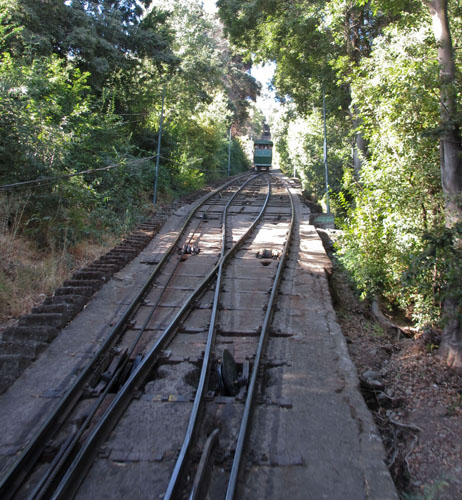
and the gondola down the other side, saving a lot of walking and climbing.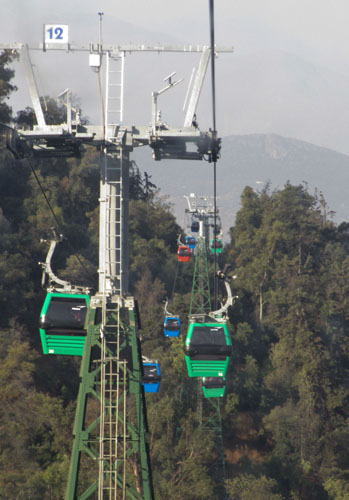
Plaza de Armas is the heart of the city’s old colonial core.

It is home to 2 neoclassical landmarks: the 1808 Palacio de la Real Audiencia, housing the National History Museum,
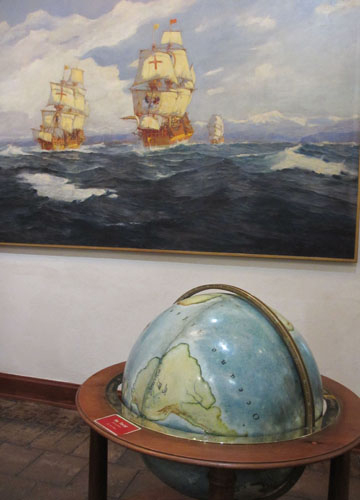
and the 18th-century Metropolitan Cathedral.
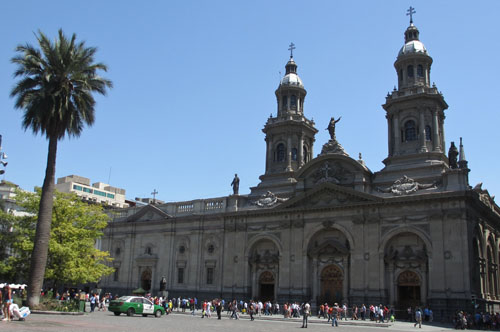
We enjoyed people-watching and walking around the plaza. Several men were playing chess under the shade of the trees.
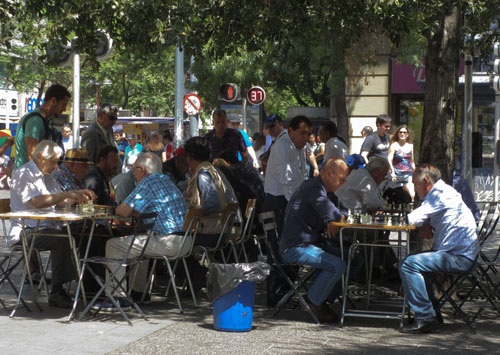
The Centro (Downtown area) is a nice place for a stroll down some of its major streets turned pedestrian walkways. There are also many stores, shopping arcades, fast food restaurants, coffee shops, etc. And a shop with generous portions of tasty gelato.
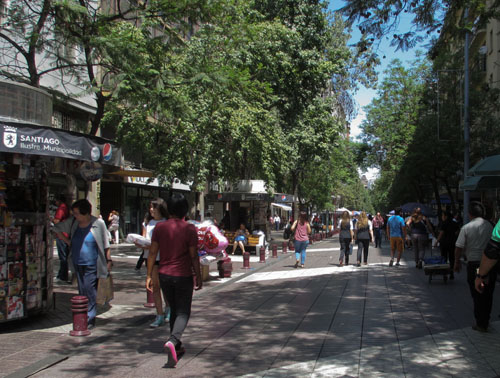
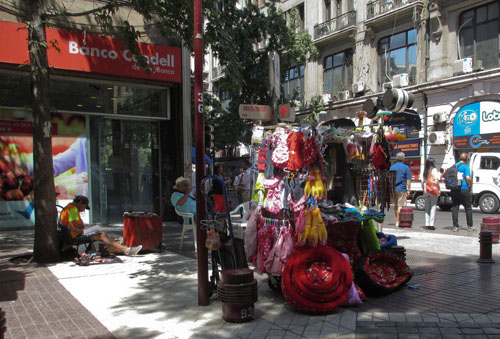
Iglesia de San Francisco, a colonial-period Catholic church, is thought to be Chile’s oldest. It has a neoclassical clock tower.
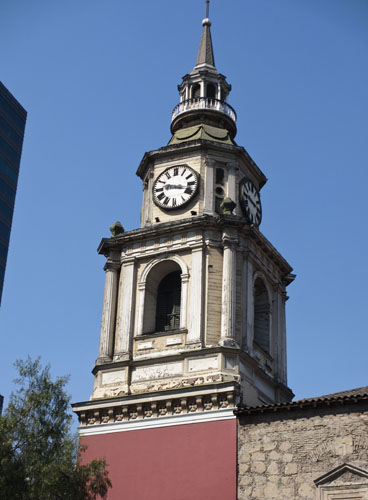
The Gran Torre Santiago, the tallest (62-story) building in South America, is quite a contrast.
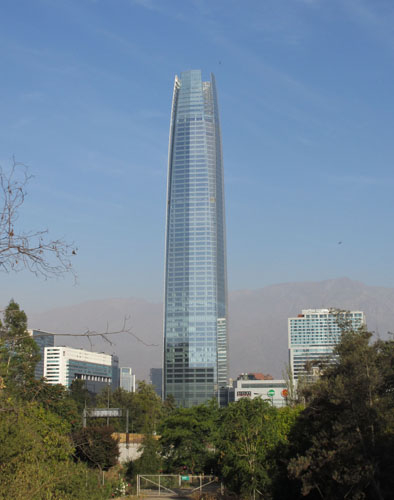
Valparaiso is recognized as a UNESCO World Heritage Site, a deserved award for its architecture, design, history and cultural contributions.
It’s known for its steep streets

and colorful, clifftop homes.
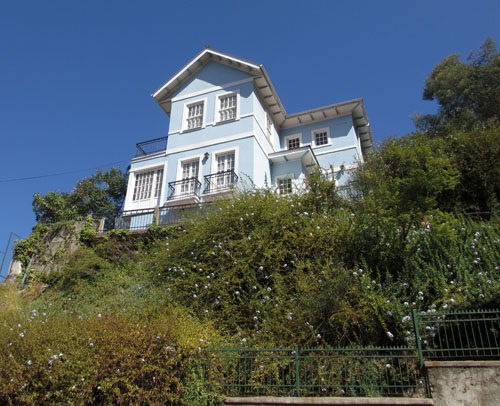
Valparaíso played an important role in the second half of the 19th century, when the city served as a major stopover for ships traveling between the Atlantic and Pacific oceans by crossing the Straits of Magellan. Valparaíso mushroomed during its golden age, as a magnet for European immigrants, when the city was known by international sailors as “The Jewel of the Pacific”.
However, in the first half of the 20th century, the wealthy residents abandoned the city. The opening of the Panama Canal and reduction in ship traffic dealt a serious blow to Valparaíso’s port-based economy.
Over the past few years, the city has seen a recovery, attracting artists and cultural entrepreneurs who have set up in the city’s hillside historic districts. Today, many thousands of tourists visit Valparaíso from around the world to enjoy the city’s labyrinth of cobbled alleys and colorful buildings.
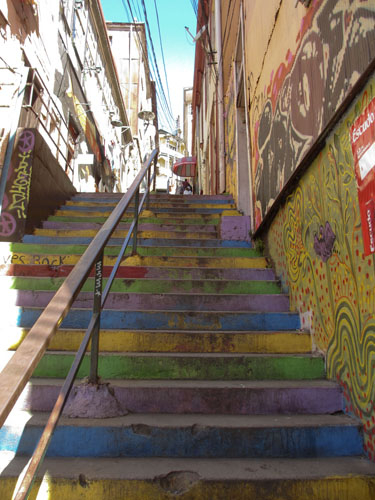
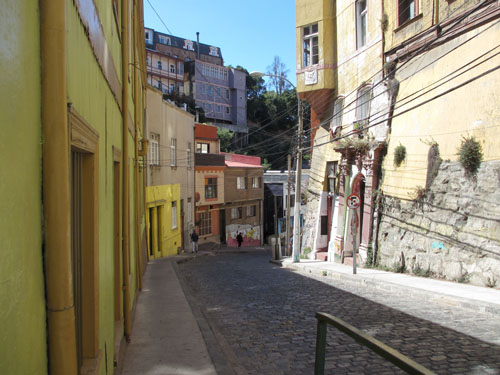
The port of Valparaíso continues to be a major distribution center for container traffic, copper, and fruit exports.
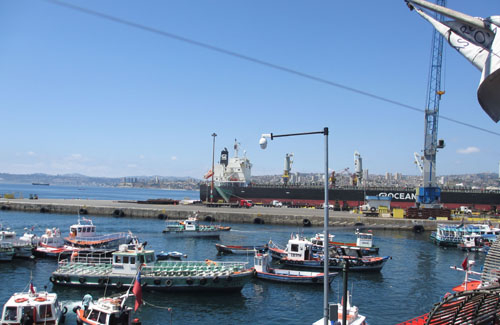
We watched container ships being loaded
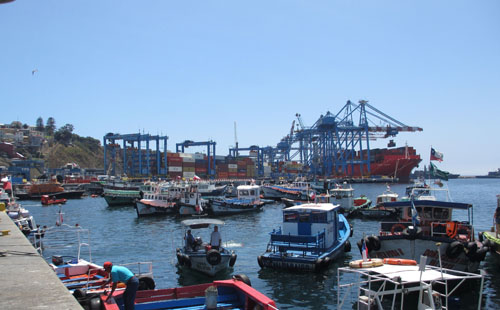
while dining on Conger Eel, a favorite fish in Chile, both grilled
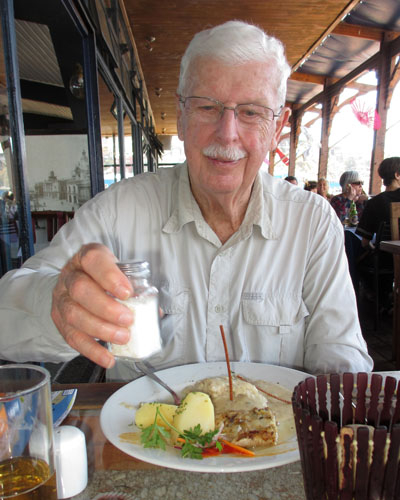
and fried
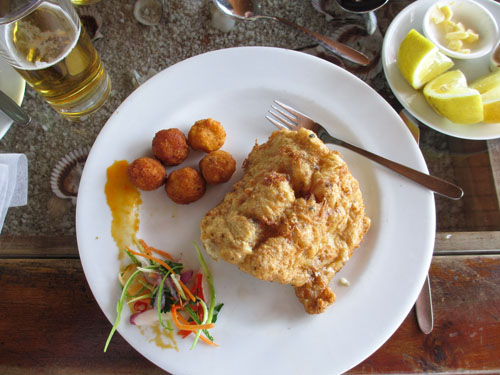
The navy has an impressive presence at the beautiful Plaza Sotomayor.

